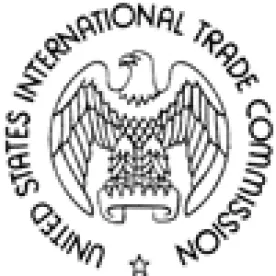There are many advantages to pursuing relief for patent infringement in the International Trade Commission (ITC) compared to U.S. district court, but one that receives little attention is the success rate for complainants (plaintiffs). The rate has been climbing for years and reached nearly 90% for cases decided on the merits in 2017. With such a high rate of success and the many other advantages for complainants, the ITC should be on every patent owner’s radar.
The ITC has authority to hear patent infringement cases under Section 337 of the Tariff Act. Section 337 limits the ITC’s authority to patent cases in which a complainant alleges infringement by the importation, the sale for importation, or sale after importation in the United States of an accused product. The complainant also must allege that a domestic industry exists or is in the process of being established in the United States. The domestic industry must be the result of efforts by the complainant or its licensees to invest in or exploit the patented article or technology.
If a complainant can meet these requirements, Section 337 offers many advantages compared to U.S. district court proceedings. First, Section 337 cases are extremely fast-paced and usually are completed within 12 to 15 months from institution. In line with this rocket docket, the ITC will not stay proceedings for parallel inter partes review of asserted patents. By comparison, U.S. district court proceedings often take several years and delays are only exacerbated by stays due to parallel inter partes reviews.
Second, the ITC offers great flexibility in defining cases. While the typical ITC case involves a domestic complainant and a foreign respondent, there is no obstacle to foreign entities bringing Section 337 cases. Jurisdiction for Section 337 cases is in rem rather than in personam, meaning it is over the accused product rather than a proposed respondent. Because there are no forum issues to resolve related to personal jurisdiction or venue, a single Section 337 case can address infringement by multiple parties and products. By comparison, forum restrictions plague U.S. district courts with the anti-joinder limitations of the America Invents Act and venue restrictions of TC Heartland v. Kraft Foods, 137 S. Ct. 1514 (2017).
Third, the ITC offers powerful remedies. The default remedy in a Section 337 case is an exclusion order which is comparable to an injunction issued by a district court. An exclusion order prohibits infringing products from entering the United States. The threat of this extreme remedy often leads to larger settlements for patent owners. By comparison, in district court injunctions are no longer an automatic remedy for patent infringement after the Supreme Court’s decision in eBay v. MercExchange, 126 S. Ct. 1837 (2006).
These are just a few of the advantages for complainants in ITC proceedings. But one that has not received much attention is the high success rate for complainants. In 2017 the ITC found a violation in 88% of the cases decided on the merits. (See ITC Section 337 Statistics, Number of Cases in which a Determination is Made on the Merits by Fiscal Year, available at https://www.usitc.gov/intellectual_property/337_statistics_number_cases_which_violation.htm.) Nearly all of these violations presumably were based on patent infringement as the vast majority of Section 337 cases allege solely patent infringement. (See ITC Section 337 Statistics, Types of Unfair Acts Alleged in Active Investigations by Fiscal Year, available at https://www.usitc.gov/intellectual_property/337_statistics_types_unfair_acts_alleged_active.htm (showing 102 of 117 active cases in 2017 involved solely patent infringement allegations).) Last year was not a fluke. Complainants’ success rate in cases decided on the merits has been trending upward for some time. In 2011 the rate was under 40%; in 2013 it crept to 47%; in 2015 it was 63%; and now is near 90%. Although entirely speculative, this pro-complainant trend may be the result of the retirement of administrative law judges, appointment of new judges, and turnover of Commissioners.
It is well known that the ITC affords strategic advantages for patent owners in defining and litigating patent infringement cases to set up an eventual settlement. Recent statistics showing the high rate of success for complainants should afford patent owners even more bargaining power in settlement discussions and less worry if those discussions fail.




 />i
/>i

